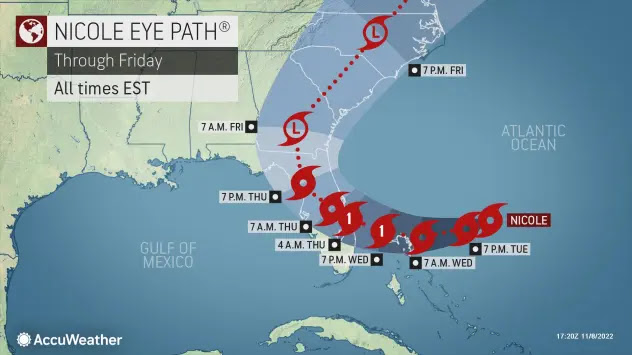 Yesterday I talked about Powerball. Last night a ticket sold in Altadena, California won $2.04 billion. The winning numbers were 10, 33, 41, and 56 for the white balls, and 10 for the red Powerball. The previous record was $1.586 billion won by three ticketholders. The announcement was 10 hours late because of a problem with processing sales. How's this for luck: the odds of winning were 1 in 292.2 million.
Yesterday I talked about Powerball. Last night a ticket sold in Altadena, California won $2.04 billion. The winning numbers were 10, 33, 41, and 56 for the white balls, and 10 for the red Powerball. The previous record was $1.586 billion won by three ticketholders. The announcement was 10 hours late because of a problem with processing sales. How's this for luck: the odds of winning were 1 in 292.2 million.
Apparently, if you got infected with the COVID-19 virus, and took
Paxlovid, doing so reduced your risk of long COVID. There is no data on how well this treatment works if you haven't had this disease. and later get infected. Would be worth a study. Learn more about Paxlovid by clicking
here and
here. There is that matter of rebound that has occurred to some.
Yesterday my posting seemed to be the only source of optimism for Democrats. But who am I, plus I've never done this before. Much will depend how much the Trump-effect affects those marginal 10% Republicans and 20% Independents who are negatively influenced by the Donald. There reportedly are
200 Republican candidates running today linked to Trump. If they do well, look for his announcement later this week to run for president in 2024. Then worry a lot. After polls close, follow-up-to-the-minute
results in key Senate, House and governor races. Well, Tuesday is nostalgia day, and before returning to Tokyo, as part four of my adventure in the Orient in March of 2011,
I had one of my best meals of my life at Jung Sik-dang in Seoul, rivaling
Noma (Copenhagen), La Terrazza (Rome) and Konigshof Restaurant (Munich). With me is Chef Yim Jung-Sik. The second salad was particularly artistic, and this is how you selected your tea.
So on to my Orient adventures following that catastrophic earthquake/tsunami/nuclear cataclysm Japan experienced on 11March2011. It all started calmly in Thailand, then my chaotic stop in Japan, escape to China and semi-return to Seoul. On 22March2011 I flew to Narita, one of only a very few on my
Asiana flight. The airport was a mess with most still trying to escape Japan. Not certain of how things would be in Tokyo, I thought I might as well enjoy a bit of luxury with this excellent Korean meal.
Yes, it seems unseemly and discrepant to, on the one hand, review the worst natural disaster ever for Japan, while being over the top indulgent with those cuisine entries. This my way of providing balance, while attempting to continue enjoying life while wading through disaster. I really felt endangered.
The Airport limousine bus service was re-activated, so on I went to the Tokyo Westin, where the occupancy was said to be 12%. On Day 12 of the Great Tohoku Earthquake and Tsunami, the Huffington Post published two of my articles:
I said:
Fukushima #2 and #3 nuclear reactors remain testy. I fear the plutonium from #3. The seawater 100 meters south of this stricken site was finally measured, and, no great surprise, but the radiation level was from 16 (Cesium-137) to 127 (Iodine-131) times higher than government standards.
There was a strong earthquake that rocked my hotel. On Day 13 I reported:
3. The radioactivity in Tokyo compared to yesterday is up by 20% and I can't drink the tapwater, which I don't anyway, as bottle water is universally available. But should I take a shower? In 2019 I saw this headline:
Fukushima's Final Costs Will Approach A Trillion Dollars Just for the Nuclear Disaster
A photo of my breakfast.
On 24March2011, which is Day 14, I noticed just below my window, Robuchon's. At the age of 28 he was the youngest to earn 3 Michelin stars, and was named chef of the century in 1989. He mentored Gordon Ramsay. So I went to dinner at Robuchon.
There were other courses, but you can
read the details here. The best French meal I ever had.
The radiation level kept increasing, so I decided to Shinkansen west to Fukuoka, where I will continue next week as part five.
Nicole will become a hurricane tomorrow and make landfall over Florida.
-
 Yesterday I talked about Powerball. Last night a ticket sold in Altadena, California won $2.04 billion. The winning numbers were 10, 33, 41, and 56 for the white balls, and 10 for the red Powerball. The previous record was $1.586 billion won by three ticketholders. The announcement was 10 hours late because of a problem with processing sales. How's this for luck: the odds of winning were 1 in 292.2 million.
Yesterday I talked about Powerball. Last night a ticket sold in Altadena, California won $2.04 billion. The winning numbers were 10, 33, 41, and 56 for the white balls, and 10 for the red Powerball. The previous record was $1.586 billion won by three ticketholders. The announcement was 10 hours late because of a problem with processing sales. How's this for luck: the odds of winning were 1 in 292.2 million.


















Comments
Post a Comment